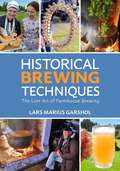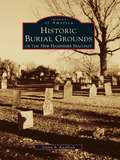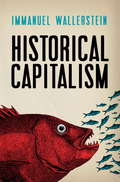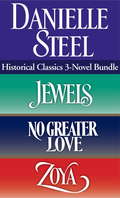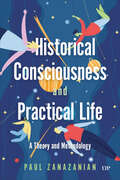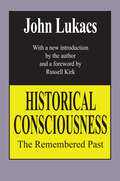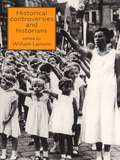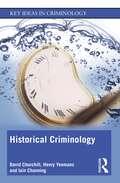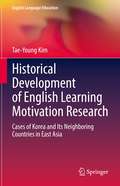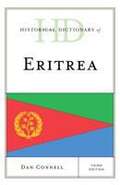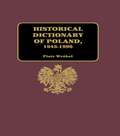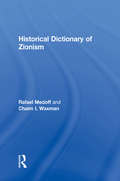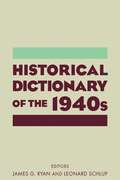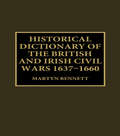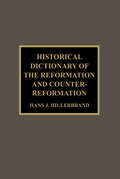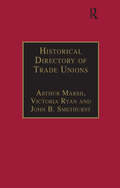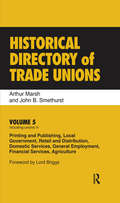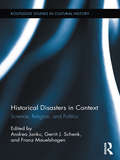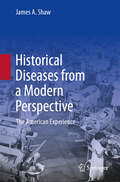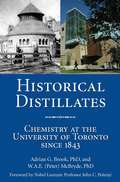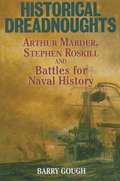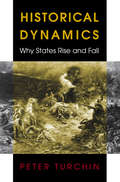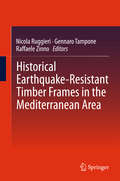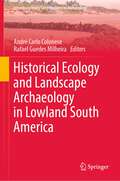- Table View
- List View
Historical Brewing Techniques: The Lost Art of Farmhouse Brewing
by Lars Marius GarsholAncient brewing traditions and techniques have been passed generation to generation on farms throughout remote areas of northern Europe. With these traditions facing near extinction, author Lars Marius Garshol set out to explore and document the lost art of brewing using traditional local methods. Equal parts history, cultural anthropology, social science, and travelogue, this book describes brewing and fermentation techniques that are vastly different from modern craft brewing and preserves them for posterity and exploration. Learn about uncovering an unusual strain of yeast, called kveik, which can ferment a batch to completion in just 36 hours. Discover how to make keptinis by baking the mash in the oven. Explore using juniper boughs for various stages of the brewing process. Test your own hand by brewing recipes gleaned from years of travel and research in the farmlands of northern Europe. Meet the brewers and delve into the ingredients that have kept these traditional methods alive. Discover the regional and stylistic differences between farmhouse brewers today and throughout history.
Historical Burial Grounds of the New Hampshire Seacoast (Images of America)
by Glenn A. KnoblockHistoric Burial Grounds of the New Hampshire Seacoast, a photographic study of Colonial Era-burial grounds, uncovers the fascinating history of the area from the 1680s to 1810. These early cemeteries are a direct link to our past, and yet very little has been done to preserve their history through photographs. By understanding how, why, and by whom these gravestones were made, the symbolism they portray can be understood, and we will gain a clearer understanding of the ways in which our ancestors lived and died. The burial grounds and the gravestones within them have often been called "open air museums." They contain some of the oldest works of art found in the area; some gravestones are more than 300 years old. Through the author's collection of photographs, one can see the entire range of images present in the area's old burial grounds, including grinning skulls and crossbones, heavenly cherubs, and epitaphs that tell magnificent tales. This collection is a must for anyone interested in local history, genealogy, or colonial-era art.
Historical Capitalism
by Immanuel WallersteinA succinct introduction to the history of capitalism by the renowned political theorist. In this short, highly readable book, the master of world-systems theory provides a succinct anatomy of capitalism over the past five hundred years. Considering the way capitalism has changed and evolved over the centuries, and what has remained constant, he outlines its chief characteristics. In particular, he looks at the emergence and development of a world market, and of labor; in doing so, he argues that capitalism has brought about immiseration in the Global South. As long as they remain within a framework of world capitalism, Wallerstein concludes, the economic and social problems of developing countries will remain unresolved.Historical Capitalism, published here with its companion essay Capitalist Civilization, is a concise, compelling beginners' guide to one of the most challenging and influential assessments of capitalism as a world-historic mode of production.
Historical Classics 3-Novel Bundle: Jewels, No Greater Love, And Zoya
by Danielle SteelIn book after beloved book, New York Times bestselling author Danielle Steel consistently writes captivating stories notable for their unforgettable characters, page-turning plots, and richly imagined settings. Steel’s sweeping, emotionally resonant historical novels in particular hold a special place in readers’ hearts. Now here’s a convenient eBook bundle that features three classic historical novels—Jewels, No Greater Love, and Zoya—stellar fiction from the incomparable Danielle Steel. Includes an excerpt from Danielle Steel’s latest historical novel, Legacy, a compelling, centuries-spanning novel that brilliantly interweaves the lives of two women.
Historical Consciousness and Practical Life: A Theory and Methodology
by Paul ZanazanianHistorical Consciousness and Practical Life introduces a novel approach to examining how people construct and employ historical knowledge in their daily lives. In viewing history as an embodied cultural practice that constitutes the background to our meaning-making, the book demonstrates how researchers and others can investigate the ways in which people make sense of time’s flow in their now-moment engagements with the world and use that information to position themselves regarding key social problems with historical roots. The book provides a glimpse at how humans enter historically embedded thinking problems, seeking to resolve them. Paul Zanazanian draws on a study of the community leaders of English-speaking Quebec to illustrate the practical life methodology’s workings. In looking at their different uses of history for strengthening their group’s vitality in the province, he identifies five key stances these leaders employ for positioning their sense of purpose and responsibility for securing English-speaking Quebec’s future. Ultimately, Historical Consciousness and Practical Life argues that community leaders who complicate and problematize their uses of history are the best positioned to make positive transformations for their group.
Historical Consciousness: The Remembered Past
by John LukacsOne of the most important developments of Western civilization has been the growth of historical consciousness. Consciously or not, history has become a form of thought applied to every facet of human experience; every field of human action can be studied, described, or understood through its history. In this extraordinary analysis of the meaning of the remembered past, John Lukacs discusses the evolution of historical consciousness since its first emergence about three centuries ago.
Historical Controversies and Historians
by William LamontFor students new to the subject of history there are many books on the "theory" of writing history but fewer on how history is actually "practised". This work by a team of historians from the University of Sussex fills this gap. The first half of the book examines a number of notable controversies that have been, and still are, the subject of historical debate - for example, race in South Africa, the legacy of the French Resistance, the origins of the Welfare State. These illustrate the issues involved in "doing" history. The second half of the book focuses upon the historians themselves - such as Tawney, Carr, Buckhardt, Weber, Thompson - and demonstrates how the historian puts his/her own spin on historical interpretation. Together the study of controversies and historians shows with clarity the practical issues of historical method. "Historical Controversies and Historians" should be a useful primer for any student embarking on a course in history.
Historical Criminology (Key Ideas in Criminology)
by David Churchill Henry Yeomans Iain ChanningThis book sets an agenda for the development of historical approaches to criminology. It defines ‘historical criminology’, explores its characteristic strengths and limitations, and considers its potential to enhance, revise and fundamentally challenge dominant modes of thinking about crime and social responses to crime. It considers the following questions: What is historical criminology? What does thinking historically about crime and justice entail? How is historical criminology currently practised? What are the advantages and disadvantages of different approaches to historical criminology? How can historical criminology reshape understandings of crime and social responses to crime? How does thinking historically bear upon major theoretical, conceptual and methodological questions in criminological research? What does thinking historically have to offer criminological scholarship more broadly, and the uses of criminology in the public realm? In this book, Churchill, Yeomans and Channing situate ‘historical thinking’ at the heart of historical criminology, reveal the value of historical research to criminology and argue that criminologists across the field have much to gain from engaging in historical thinking in a more regular and sustained way. This book is essential reading for all criminologists, as well as students taking courses on theories, concepts and methods in criminology.
Historical Development of English Learning Motivation Research: Cases of Korea and Its Neighboring Countries in East Asia (English Language Education #21)
by Tae-Young KimThis book clarifies the fundamental difference between North America-based instrumental motivation and Korea (and East Asia)-specific competitive motivation by which the EFL learners’ excessive competition to be admitted to famous universities and to be hired at a large-scale conglomerate is the main source of L2 motivation. It enables readers to understand that EFL-learning motivation reflects unique sociohistorical contexts grounded in a specific region or country. This book in turn necessitates the need to develop EFL motivation theory and research tradition which are firmly based on East Asian values and culture.
Historical Dictionary of Eritrea (Historical Dictionaries of Africa)
by Dan ConnellIn 1991, Eritrea, a country in northeast Africa, won a 30-year war for independence from Ethiopia, and in 1993 it was recognized as Africa's newest nation after more than a century of conquest and occupation by a succession of external powers that included the Ottomans, Egypt, Italy, Great Britain, and Ethiopia. Each left its mark while fostering a deep distrust of outsiders and a fierce commitment to Eritrea's separate political identity. Eritrea and Ethiopia slipped into a chronic state of no-peace-no-war that kept the entire Horn of Africa off balance for nearly two decades. The standoff ended in 2018 when a newly installed Ethiopian prime minister reached out to Eritrea and set in motion a rapid-fire series of talks among the states of the African Horn that broke down long-standing barriers and raised hopes for a new era of regional peace and cooperation. This third edition of Historical Dictionary of Eritrea contains a chronology, an introduction, appendixes, an extensive bibliography, and more than 600 cross-referenced entries on important personalities and aspects of the country's politics, economy, foreign relations, religion, and culture. This book is an excellent resource for students, researchers, and anyone wanting to know more about Eritrea. DAN CONNELL is a visiting scholar at Boston University's African Studies Center and a retired senior lecturer in journalism and African politics at Simmons College, Boston. He has also consulted for numerous development agencies and human rights organizations and is the founder and former director of Grassroots International. He is working on a book about the experiences of Eritrean refugees. The DAISY markup is as follows: Letters of the alphabet are at level 1; individual entries are at level 2.
Historical Dictionary of Poland 1945-1996
by Piotr WróbelLocated between the former Soviet Union and eastern Germany, Poland has the potential to become a political and economic bridge between the East and West. It is crucial to European security and stabilization; yet the list of reference books on recent Polish history is very short. This book fills that gap, providing information on Polish political, economic, and cultural history since 1945.
Historical Dictionary of Zionism (Religions, Philosophies, And Movements Ser. #No. 31)
by Chaim I. Waxman Rafael MedoffThe Jewish attachment to Zion is many centuries old. Although the modern Zionist movement was organized only a little more than a century ago, the roots of the Zionist idea reach back almost 4,000 years, to the day that the biblical patriarch Abraham left his home in Ur of the Chaldees to settle in the promised land The Historical Dictionary of Zionism is an excellent source of information on Zionism, its founders and leaders, its various strands and organizations, major events in its struggle, and its present status. By showing the movement's strengths and weaknesses, it also acts as a corrective to overly idealistic comments by its supporters and the wilder claims of its opponents. A much more realistic understanding is offered in the Introduction, which presents and explains the movement; the Chronology, which shows its historic progression; the Dictionary, which includes numerous entries on crucial persons, organizations and events; and the Bibliography, which points the way to further reading.
Historical Dictionary of the 1940s
by James Gilbert Ryan Leonard C SchlupThe only available historical dictionary devoted exclusively to the 1940s, this book offers readers a ready-reference portrait of one of the twentieth century's most tumultuous decades. In nearly 600 concise entries, the volume quickly defines a historical figure, institution, or event, and then points readers to three sources that treat the subject in depth. In selecting topics for inclusion, the editors and authors offer a representative slice of life as contemporaneous Americans saw it - with coverage of people; movements; court cases; and economic, social, cultural, political, military, and technological changes. The book focuses chiefly on the United States, but places American lives and events firmly within a global context.
Historical Dictionary of the British and Irish Civil Wars, 1637-1660 (Historical Dictionaries Of War, Revolution, And Civil Unrest Ser. #No. 14)
by Martyn BennettDuring the 17th century the British Isles were trapped in a 23-year-long state of turmoil through civil war, continued rebellion, and revolutions. King Charles I wanted to instill a new uniform religious policy throughout the British Isles, and this caused a massive uproar over the King's policies toward the diverse people in his kingdom, the English, Irish, Scottish, and Welsh. Through a concise historical chronology and comprehensive overview, users of the Historical Dictionary of the British and Irish Civil Wars will find a very insightful explanation of the people, places, and events that indelibly shaped the United Kingdom's 17th-century history. The cross-listed dictionary entries offer a complete explanation of each important aspect of the Civil Wars and their effect on the kingdom. Also includes maps and a bibliography.
Historical Dictionary of the Reformation and Counter-Reformation (Religions, Philosophies, And Movements Ser. #No. 27)
by Hans J. HillerbrandThe Reformation of the 16th century has always been seen as one of the pivotal events in European history. Lord Acton, the famous 19th-century British historian, compared the importance of Martin Luther's speech at the diet at Worms in 1521 with Napoleon's defeat at the Battle of Waterloo in 1813. Lord Acton's may or may not be an extravagant claim, but it is certainly true that the events of the 16th and 17th centuries, now called the Reformation and Counter-Reformation, changed forever the religious and political history of the West.The Historical Dictionary of the Reformation and Counter-Reformation provides a one-volume, balanced, alternative to the overwhelming amounts of literature on the events of the time and the theological and political debates that spawned those events.
Historical Directory of Trade Unions: Volume 4, Including Unions in Cotton, Wood and Worsted, Linen and Jute, Silk, Elastic Web, Lace and Net, Hosiery and Knitwear, Textile Finishing, Tailors and Garment Workers, Hat and Cap, Carpets and Textile Engineering
by Victoria Ryan Arthur MarshDespite widespread interest in the trade union movement and its history, it has never been easy to trace the development of individual unions, especially those now defunct, or where name changes or mergers have confused the trail. In this respect the standard histories and industrial studies tend to stimulate curiosity rather than satisfy it. When was a union founded? When did it merge or dissolve itself, or simply disappear? What records survive and where can further details of its history be found? These are the kinds of question the Directory sets out to answer. Each entry is arranged according to a standard plan, as follows: 1. Name of union; 2. Foundation date: Name changes (if any) and relevant dates. Any amalgamation or transfer of engagements. Cessation, winding up or disappearance, with date and reasons where appropriate and available; 3. Characteristics of: membership, leadership, policy, outstanding events, membership (numbers). 4. Sources of information: books, articles, minutes etc; location of documentation.
Historical Directory of Trade Unions: Volume 4, Including Unions in Cotton, Wood and Worsted, Linen and Jute, Silk, Elastic Web, Lace and Net, Hosiery and Knitwear, Textile Finishing, Tailors and Garment Workers, Hat and Cap, Carpets and Textile Engineering
by Victoria Ryan Arthur MarshDespite widespread interest in the trade union movement and its history, it has never been easy to trace the development of individual unions, especially those now defunct, or where name changes or mergers have confused the trail. In this respect the standard histories and industrial studies tend to stimulate curiosity rather than satisfy it. When was a union founded? When did it merge or dissolve itself, or simply disappear? What records survive and where can further details of its history be found? These are the kinds of question the Directory sets out to answer. Each entry is arranged according to a standard plan, as follows: 1. Name of union; 2. Foundation date: Name changes (if any) and relevant dates. Any amalgamation or transfer of engagements. Cessation, winding up or disappearance, with date and reasons where appropriate and available; 3. Characteristics of: membership, leadership, policy, outstanding events, membership (numbers). 4. Sources of information: books, articles, minutes etc; location of documentation.
Historical Directory of Trade Unions: Volume 5, Including Unions in Printing and Publishing, Local Government, Retail and Distribution, Domestic Services, General Employment, Financial Services, Agriculture
by Arthur MarshDespite widespread interest in the trade union movement and its history, it has never been easy to trace the development of individual unions, especially those now defunct, or where name changes or mergers have confused the trail. In this respect the standard histories and industrial studies tend to stimulate curiosity rather than satisfy it. When was a union founded? When did it merge or dissolve itself, or simply disappear? What records survive and where can further details of its history be found? These are the kinds of question the Directory sets out to answer. Each entry is arranged according to a standard plan, as follows: 1. Name of union; 2. Foundation date: Name changes (if any) and relevant dates. Any amalgamation or transfer of engagements. Cessation, winding up or disappearance, with date and reasons where appropriate and available; 3. Characteristics of: membership, leadership, policy, outstanding events, membership (numbers). 4. Sources of information: books, articles, minutes etc; location of documentation.
Historical Disasters in Context: Science, Religion, and Politics (Routledge Studies in Cultural History)
by Franz Mauelshagen Andrea Janku Gerrit J. SchenkGrowing concerns about climate change and the increasing occurrence of ever more devastating natural disasters in some parts of the world and their consequences for human life, not only in the immediately affected regions, but for all of us, have increased our desire to learn more about disaster experiences in the past. How did disaster experiences impact on the development of modern sciences in the early modern era? Why did religion continue to play such an important role in the encounter with disasters, despite the strong trend towards secularization in the modern world? What was the political role of disasters? Historical Disasters in Context illustrates how past societies coped with a threatening environment, how societies changed in response to disaster experiences, and how disaster experiences were processed and communicated, both locally and globally. Particular emphasis is put on the realms of science, religion, and politics. International case studies demonstrate that while there are huge differences across cultures in the way people and societies responded to disasters, there are also many commonalities and interactions between different cultures that have the potential to alter the ways people prepare for and react to disasters in future. To explain these relationships and highlight their significance is the purpose of this volume.
Historical Diseases from a Modern Perspective: The American Experience
by James A. ShawHistorical Diseases from a Modern Perspective: The American Experience is a must read for any student of history or fan of historical novels. Every disease section contains fascinating historical insights relevant to the American experience, including how the 1900 outbreak of plague in San Franciso was contained, why the flow of the Chicago River was reversed, why “chicken pox parties” were once common, how the scourge of yellow fever was abated, and why poor southerners were once considered lazy and shiftless. Those readers interested in military history will learn how smallpox impacted troop strength in the Revolutionary War, dysentery in the Civil War, influenza in WWI, malaria in WWII, and sexually transmitted diseases across all wars. The social history of alcohol and opioid use is outlined as is the pre-antibiotic treatment of syphilis and gonorrhea, giving rise to the quip, “A night with Venus and a lifetime with mercury,” and the nickname “clap.”The use of anthrax as a tool of bioterrorism, the debilitating effects of scurvy, and the horror of leprosy are all discussed, along with multiple other diseases of historical interest. The text begins by outlining historical theories of disease causation, prevention and cure, to provide a contextual understanding for the reader. The ensuing chapters describe how historical diseases acquired their traditional monikers (Spanish flu, ship fever, ague, blue death, breakbone fever, scarlet fever, etc.) and how they were treated before the era of modern medicine. Emphasis is placed on the impact of disease outbreaks on society and how the understanding, treatment, and prevention of these diseases developed over time. The threat of historical disease reemergence due to waning vaccine immunities, vaccine hesitancy, antibiotic resistance and climate change is noted as a subtext throughout the book – a peril of global concern at this time. The book covers a large array of historical diseases, grouped for clarity and understanding within the broad categories of contagious diseases, vector-borne/zoonotic diseases, fecal-oral diseases, sexually transmitted diseases, substance use disorders, parasitic diseases, nutritional diseases, fungal diseases, and soil-related bacterial diseases.
Historical Distillates: Chemistry at the University of Toronto Since 1843
by Adrian G. Brook W. A. E. Peter McBrydeHistorical Distillates examines the history of the Chemistry Department at the University of Toronto from its beginnings in 1843, when it was housed in simple quarters in the Parliament Buildings on Front Street and had just one faculty member. During the founding era (1843-1920) three British gentlemen professors guided the department through four homes; between 1920 and 1960 three Canadian heads built a highly influential department. Since 1960 eight chairmen have effectively managed a growing and diverse department while it ventured into exciting new fields and emerging sub-disciplines. New colleges and a Nobel Prize have been highlights of the past two decades. With the completion of recent renovations and additions (such as the Davenport Research Building and Garden), with its distinguished faculty, top-rate staff, and excellent students, and with its dazzling array of equipment to support research, the department’s future indeed looks bright.
Historical Dreadnoughts: Arthur Marder, Stephen Roskill and Battles for Naval History
by Barry GoughThis is the story of the remarkable, intersecting careers of the two greatest writers on British naval history in the twentieth century the American professor Arthur Marder, son of immigrant Russian Jews, and Captain Stephen Roskill, who knew the Royal Navy from the inside. Between them, these contrasting characters were to peel back the lid of historical secrecy that surrounded the maritime aspects of the two world wars, based on the privileged access to official papers they both achieved through different channels.Initially their mutual interests led to a degree of friendly rivalry, but this was to deteriorate into a stormy academic feud fought out in newspaper columns and the footnotes of their books much to the bemusement (and sometimes amusement) of the naval history community. Out of it, surprisingly, emerged some of the best historical writing on naval themes, and a central contribution of this book is to reveal the process by which the two historians produced their literary masterpieces.Anyone who has read Marders From the Dreadnought to Scapa Flow or Roskills The War at Sea and they were both bestsellers in their day will be entertained and enlightened by this story of the men A J P Taylor called our historical dreadnoughts.This is the story of the remarkable, intersecting careers of the two greatest writers on British naval history in the twentieth century the American professor Arthur Marder, son of immigrant Russian Jews, and Captain Stephen Roskill, who knew the Royal Navy from the inside. Between them, these contrasting characters were to peel back the lid of historical secrecy that surrounded the maritime aspects of the two world wars, based on the privileged access to official papers they both achieved through different channels.Initially their mutual interests led to a degree of friendly rivalry, but this was to deteriorate into a stormy academic feud fought out in newspaper columns and the footnotes of their books much to the bemusement (and sometimes amusement) of the naval history community. Out of it, surprisingly, emerged some of the best historical writing on naval themes, and a central contribution of this book is to reveal the process by which the two historians produced their literary masterpieces.Anyone who has read Marders From the Dreadnought to Scapa Flow or Roskills The War at Sea and they were both bestsellers in their day will be entertained and enlightened by this story of the men A J P Taylor called our historical dreadnoughts.
Historical Dynamics: Why States Rise and Fall (Princeton Studies in Complexity #26)
by Peter TurchinMany historical processes are dynamic. Populations grow and decline. Empires expand and collapse. Religions spread and wither. Natural scientists have made great strides in understanding dynamical processes in the physical and biological worlds using a synthetic approach that combines mathematical modeling with statistical analyses. Taking up the problem of territorial dynamics--why some polities at certain times expand and at other times contract--this book shows that a similar research program can advance our understanding of dynamical processes in history. Peter Turchin develops hypotheses from a wide range of social, political, economic, and demographic factors: geopolitics, factors affecting collective solidarity, dynamics of ethnic assimilation/religious conversion, and the interaction between population dynamics and sociopolitical stability. He then translates these into a spectrum of mathematical models, investigates the dynamics predicted by the models, and contrasts model predictions with empirical patterns. Turchin's highly instructive empirical tests demonstrate that certain models predict empirical patterns with a very high degree of accuracy. For instance, one model accounts for the recurrent waves of state breakdown in medieval and early modern Europe. And historical data confirm that ethno-nationalist solidarity produces an aggressively expansive state under certain conditions (such as in locations where imperial frontiers coincide with religious divides). The strength of Turchin's results suggests that the synthetic approach he advocates can significantly improve our understanding of historical dynamics.
Historical Earthquake-Resistant Timber Frames in the Mediterranean Area
by Nicola Ruggieri Gennaro Tampone Raffaele ZinnoThis book presents a selection of the best papers from the HEaRT 2013 conference, held in Cosenza, Italy, which provided a valuable forum for engineers and architects, researchers and educators to exchange views and findings concerning the technological history, construction features and seismic behavior of historical timber-framed walls in the Mediterranean countries. The topics covered are wide ranging and include historical aspects and examples of the use of timber-framed construction systems in response to earthquakes, such as the gaiola system in Portugal and the Bourbon system in southern Italy; interpretation of the response of timber-framed walls to seismic actions based on calculations and experimental tests; assessment of the effectiveness of repair and strengthening techniques, e. g. , using aramid fiber wires or sheets; and modelling analyses. In addition, on the basis of case studies, a methodology is presented that is applicable to diagnosis, strengthening and improvement of seismic performance and is compatible with modern theoretical principles and conservation criteria. It is hoped that, by contributing to the knowledge of this construction technique, the book will help to promote conservation of this important component of Europe's architectural heritage.
Historical Ecology and Landscape Archaeology in Lowland South America (Interdisciplinary Contributions to Archaeology)
by André Carlo Colonese Rafael Guedes MilheiraThis edited volume scrutinizes how pre-Columbian human societies have shaped and transformed lowland South America – contributing to biological and landscape diversity. This geographic area has supported human populations since at least the transition from the Pleistocene to Holocene, but the nature and scale of these interactions are matters of debate and their legacy to modern lowland environments is not fully understood. This book brings together works from distinct disciplines, including theoretical and methodological approaches on single case studies or broad regional syntheses, with no chronological constraint. The editors aim to generate a novel contribution reporting the most recent and ground-breaking research on human interactions with past environments and resources in lowland South America, from pre-Columbian to Colonial times. The volume also discusses the legacy of these past interactions and their potential contribution to informing current conservation and development agendas, providing examples of how archaeology and paleoecology can fill gaps in conservation and developmental policy. This volume will be of interest to students, archaeologists, and readers of Latin American studies.
